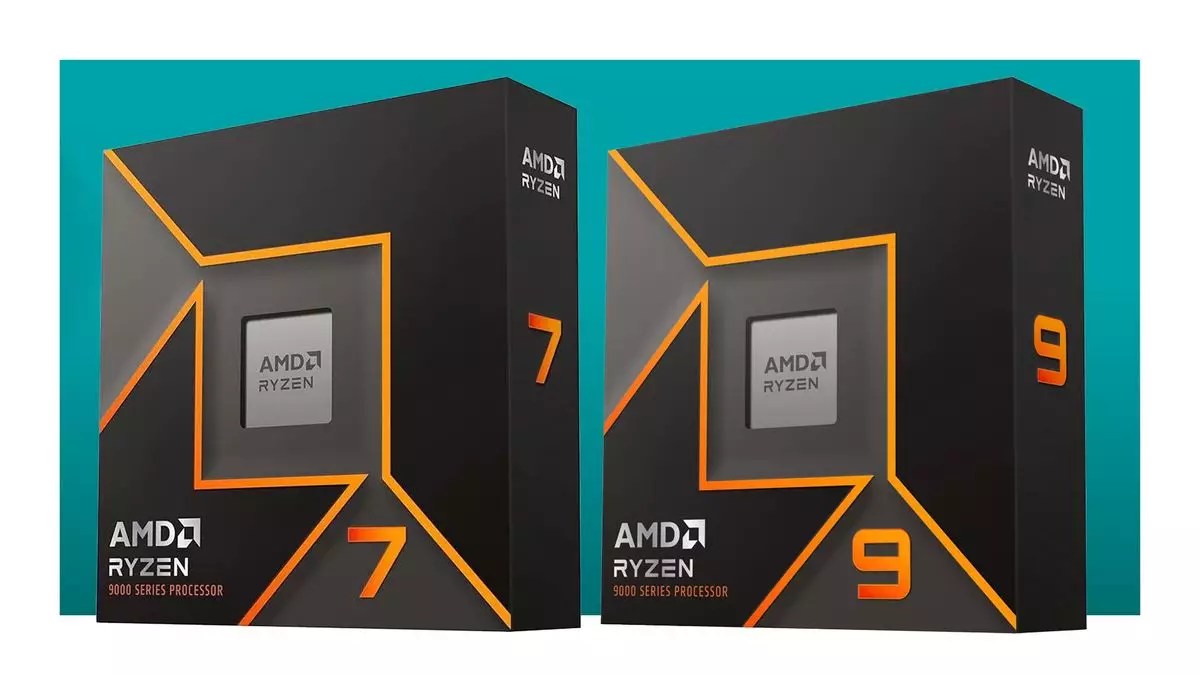Recent developments have highlighted the precarious position of Intel in the highly competitive CPU market. While the company celebrated beating its earnings guidance, which ostensibly provides a glimmer of hope to shareholders, the reality is far more nuanced. Intel’s performance has been marred by a series of product launches that have not lived up to expectations. Despite the unexpected success of their Lunar Lake line, the Arrow Lake desktop CPUs have struggled to make a significant impact. This underwhelming performance has drawn comparisons to AMD’s current offerings, which seem increasingly appealing to both casual users and gaming enthusiasts alike.
The Pricing Landscape: A Critical Review
A stark element of Intel’s struggle lies in its pricing strategy compared to AMD’s Ryzen 9000 series. Intel’s Core Ultra 9 285K, priced at around $630, is currently difficult to procure, at least indicating that stock issues are persisting during a product launch. In sharp contrast, AMD’s products are not only more readily available but also significantly cheaper. For instance, the Ryzen 9000 processers available on platforms like Newegg underscore the cost-efficiency of AMD’s lineup—particularly when you consider that the Core Ultra 5 245K is underwhelming and priced at $319 but fails to outperform AMD’s offering, the 9600X, which comes at an impressive 26% lower cost.
Moreover, the cost of entry into the AM5 platform is considerably lower. AMD’s most basic motherboards cost around $76, while Intel’s equivalent for Arrow Lake is a steep $190, thus widening the gap between these two competing brands. This pronounced difference in pricing does not just deter potential buyers but also raises questions regarding Intel’s long-term strategy.
Intel’s current challenges may be exacerbated by AMD’s introduction of new chips in the marketplace, notably the anticipated Ryzen 9 9800X3D, which is set to launch soon at $489. This move is expected to further pressure Intel as AMD continues to refine its product offerings. The upcoming discounts as part of Newegg’s Black Friday sale could also incentivize more users to switch to AMD, a trend that is likely to affect Intel’s market share.
The Ryzen 9700X, with an MSRP of $359, has caught the eye of many PC gaming enthusiasts for its performance-to-price ratio. Now, at about $312, it is a more tempting option, particularly for gamers looking to upgrade without breaking the bank. It embodies AMD’s commitment to providing compelling hardware at competitive prices, thus posing an ongoing threat to Intel’s market position.
For gamers considering an upgrade, the current landscape suggests a clear advantage for AMD. Not only is the pricing more favorable, but the performance data backs this up, especially regarding the 9700X. Intel’s slow stock response could also disadvantage those looking for timely upgrades, particularly in light of seasonal sales like Black Friday that encourage consumer spending.
Moreover, as noted, the widespread anticipation and discounting of AMD products in the lead-up to these sales could lead to a notable uptick in consumer sentiment toward the brand, impacting Intel’s positioning even further. Analysts predict a potential shift in preferences as consumers take advantage of AMD’s innovative offerings and competitive pricing.
While Intel’s fleeting success in beating earnings forecasts may provide a momentary reprieve, the overall status of the company remains tenuous. The performance of their next-generation chips, particularly Arrow Lake, and their pricing strategy will be pivotal in defining Intel’s trajectory in the upcoming months. As competitors like AMD continue to gain ground, Intel may need to engage in a more aggressive pricing strategy and innovation cycle to regain its footing. The CPU market is evidently in a state of flux, and as the dust settles from ongoing chip releases, it will become increasingly clear whether Intel can adapt or if it will find itself consistently playing catch-up in an arena that is rapidly being reshaped by its competitors.


Leave a Reply